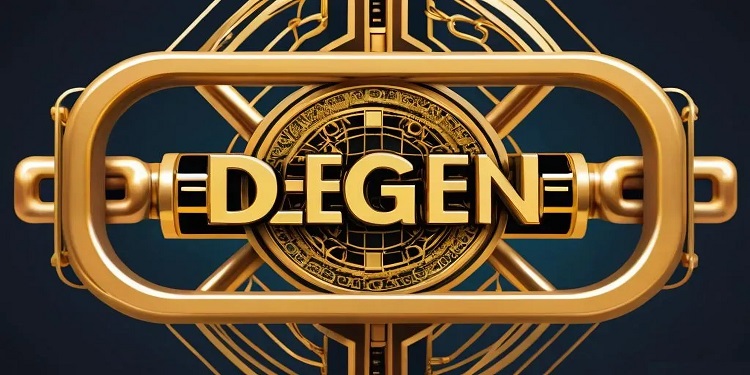Degen Chain, operating as a layer-3 blockchain atop the Base network, has captivated investors and traders with its impressive transaction volumes, nearing $100 million within just 24 hours of its inception. Since its launch four days ago, the network has witnessed an influx of over 272,000 unique transactions, accompanied by the creation of more than 7,500 contracts and 2,300 tokens. However, concerns arise as numerous tokens on the platform are associated with rug pulls or scams, underscoring the speculative and precarious nature of the cryptocurrency realm.
Tailored for DEGEN Token
Degen Chain is intricately designed for the DEGEN token, leveraging layer-2 protocols to expedite transactions and cater to specific applications. Functioning as a layer-3 blockchain, it offers customization and application specificity, leveraging layer-2 networks to efficiently execute tasks such as payments, gaming transactions, and other functionalities. The DEGEN token acts as the native gas token for fee payments within the chain, facilitating various experiments including tipping, community rewards, payments, and gaming. Tokens like Degen Swap (DSWAP) and Degen Easter Eggs (DEE) boast substantial valuations within the network, with DSWAP exceeding $14 million and DEE valued at $3.5 million.
Debating the Role of Layer-3 Networks
While Degen Chain experiences rapid user adoption and escalating transaction volumes, critics question the necessity of layer-3 networks like Degen Chain in scaling Ethereum, expressing concerns that they may detract value from the mainnet. Polygon CEO Marc Boiron argues that L3s primarily serve to shift value from Ethereum onto the L2s they are constructed upon, posing no essential role in scaling existing networks. Conversely, proponents within the crypto community advocate for the benefits of L3s, citing advantages such as low-cost native bridging from L2s, efficient on-chain proofing, custom gas tokens, and specialized state transition functions that complement L2s.
Controversies and Counterarguments
Boiron’s remarks regarding the role of layer-3 networks in scaling Ethereum have sparked controversy within the blockchain sphere. While some disagree with Boiron’s stance, asserting that L2s on Ethereum inherently contribute value to the mainnet, he emphasizes that L2 value does not equate to Ethereum’s value directly. There are concerns that an abundance of L3s settling on one L2 could potentially diminish Ethereum’s value and security. Polygon remains focused on scaling Ethereum and ensuring equitable value distribution between L2s and Ethereum.
Divergent Views and Future Prospects
Amidst debates surrounding the efficacy of layer-3 networks, Ethereum co-founder Vitalik Buterin and others perceive them as offering unique functionalities that complement L2s rather than competing directly with them. The benefits of L3s include specialized state transition functions, low-cost bridging from L2s, custom gas tokens, and efficient on-chain proofing. As discussions persist, the trajectory of layer-3 networks like Degen Chain in shaping blockchain scalability and application development remains uncertain, awaiting further evolution and exploration.

